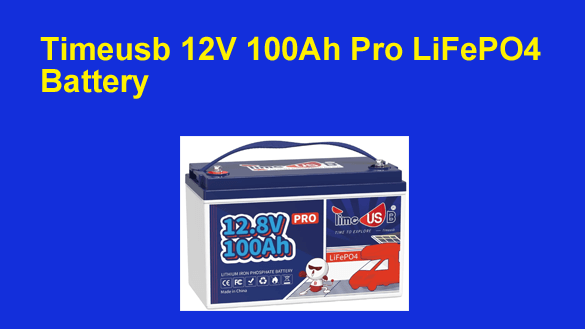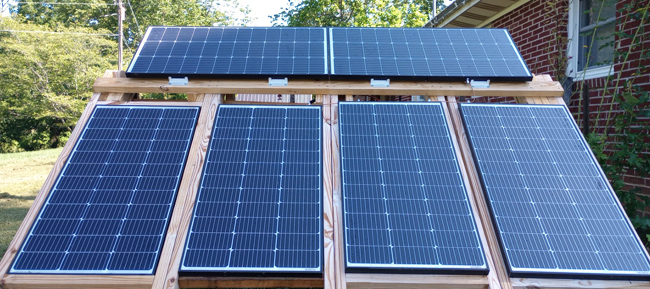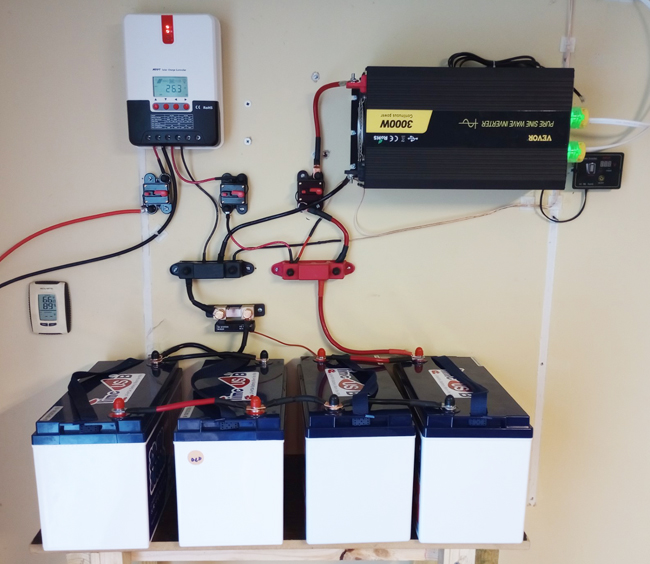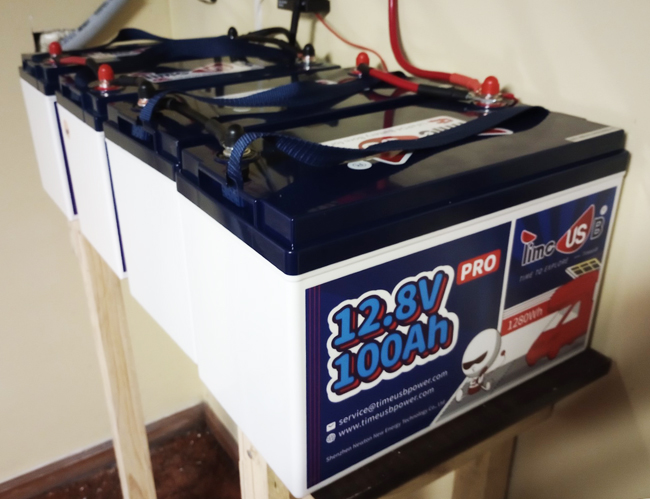 Note: The links in this post are affiliate links.
Note: The links in this post are affiliate links.
About a year ago I decided to put together a basic solar power system to power my home office so I could keep working during our somewhat frequent short-term power outages.
Being new to the world of solar power, I spent quite some time researching how it all worked and what types of components are needed to build a basic off-grid solar power setup.
It actually ended up being quite simple as there are only a few parts that are really needed to make it work.
First, you need solar panels to convert sunlight into electric power.
Next, you need a battery bank to store the power that’s collected during the day so you can use it at night.
You’ll also need a solar charge controller to adjust the power coming in from the solar panels to the proper voltage and current needed to fully (and safely) charge the batteries so they’ll be ready to provide power the next evening.
And finally, you’ll need a DC to AC power inverter to convert the DC voltage stored in the battery bank to the 120VAC that your standard appliances and other gear need in order to run.
The importance of batteries for off-grid solar power
Arguably, the most important component of any off-grid solar power generation system is the battery bank. After all, solar panels don’t work at night so you’ll need to have one or more batteries to provide the power you’ll need during the nighttime hours.
As luck would have it, solar-friendly batteries are the most expensive components in many typical off-grid solar power setups, especially if more than one battery is required.
My initial off-grid solar power installation
Since the power needed to run my home office is minimal I initially designed a very simple system that included just two 100 watt solar panels and two 12V 100 Ah LifePO4 batteries.
With an eye to keeping the overall cost of the system as low as possible, I spent quite some time shopping around for the best value in solar-friendly batteries. I quickly found that the prices of similar batteries vary greatly from one manufacturer to another.
After narrowing down my potential, I eventually settled on a pair of JJNSolar 100 watt solar panels and two Timeusb 12V 100Ah Pro LiFePO4 Batteries.
Although these batteries were among the least expensive of all the 12V 100Ah LifePO4 batteries on the market, they had overall excellent user reviews on Amazon and elsewhere.
I figured why not give them a try since my power needs were so minimal and I would only need two of them.
So I ordered everything on my parts list and assembled them into a working solar power generation system. I then made this video showing the completed system:
This setup has been powering my office day in and day out for about 6 months now, and I couldn’t be more pleased with the way everything has been performing.
The components that I was initially the most concerned about were the batteries. Like I said, they were the lowest cost 12V 100Ah batteries I found so I was naturally a bit anxious even after reading the great reviews.
To my delight, my two Timeusb batteries have performed flawlessly day in and day out ever since day 1. They have never fallen below 80% charge level and they always quickly recharged back to 100%, even when connected to just two 100 watt solar panels.
I was so impressed with my very minimal solar power system that I recently decided to expand it by adding an additional four 100 watt panels (for a total of 600 watts) and two additional 12V 100Ah batteries. And of course I decided to once again go with Timeusb.
My off-grid solar power installation as it is now
My system now has six 100 watt solar panels and four Timeusb 12V 100Ah Pro LiFePO4 batteries in a series-parallel configuration (for a 24 volt / 200 Ah battery bank).
Here’s a photo of the new solar panel installation:

And here are the indoor components, including the two additional Timeusb 12V 100Ah Pro LiFePO4 batteries installed:

And here’s a photo of the battery bank taken from the side:

This new setup has been powering my home office and parts of two additional rooms for a while now and everything is working flawlessly.
Every component in this system is performing very well, and the batteries in particular are meeting (well, actually exceeding) my expectations.
Conclusion
If you’re looking to dip your toe into the pool of solar power, I recommend that first you do some basic research to learn how it all works. (Let me know if you’d like some recommendations on where to look for the info you need.)
I believe you’ll be surprised how simple it really is and how easy it is to design and build a basic solar power generation system.
Then when it comes time to design and build your off-grid solar system I recommend going with Timeusb for your battery needs, especially if you’re looking for a great balance between cost and performance.